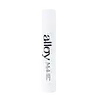What's inside
What's inside
 Key Ingredients
Key Ingredients

 Benefits
Benefits

 Concerns
Concerns

 Ingredients Side-by-side
Ingredients Side-by-side

Estriol
C12-15 Alkyl Benzoate
AntimicrobialCaprylic/Capric Triglyceride
MaskingCetyl Alcohol
EmollientEthylhexylglycerin
Skin ConditioningGlycerin
HumectantGlyceryl Stearate
EmollientHydroxyethyl Acrylate/Sodium Acryloyldimethyl Taurate Copolymer
Emulsion StabilisingOleic Acid
EmollientOlea Europaea Fruit Oil
MaskingPEG-100 Stearate
Phenoxyethanol
PreservativeDimethicone
EmollientWater
Skin ConditioningStearic Acid
CleansingTriethanolamine
BufferingTocopheryl Acetate
AntioxidantEstriol, C12-15 Alkyl Benzoate, Caprylic/Capric Triglyceride, Cetyl Alcohol, Ethylhexylglycerin, Glycerin, Glyceryl Stearate, Hydroxyethyl Acrylate/Sodium Acryloyldimethyl Taurate Copolymer, Oleic Acid, Olea Europaea Fruit Oil, PEG-100 Stearate, Phenoxyethanol, Dimethicone, Water, Stearic Acid, Triethanolamine, Tocopheryl Acetate
Estriol 0.3%
Ascorbic Acid 1%
AntioxidantHyaluronic Acid 0.5%
HumectantAloe Barbadensis Leaf
MaskingGlycerin
HumectantSodium Bisulfate
BufferingBHT
AntioxidantAcrylates/C12-22 Alkyl Methacrylate Copolymer
Aluminum Starch Octenylsuccinate
AbsorbentBis-Vinyldimethicone/Bis-Isobutyl PPG-20 Crosspolymer
EmollientCaprylic/Capric Triglyceride
MaskingCarthamus Tinctorius Seed Oil
MaskingCeteth-20
CleansingCetyl Alcohol
EmollientCyclohexasiloxane
EmollientCyclopentasiloxane
EmollientDicaprylyl Ether
EmollientDimethicone
EmollientDimethyl Isosorbide
SolventDisteardimonium Hectorite
StabilisingGlyceryl Stearate
EmollientIsodecyl Neopentanoate
EmollientIsododecane
EmollientIsopropyl Palmitate
EmollientLaureth-12
EmulsifyingLecithin
EmollientOzokerite
Emulsion StabilisingPEG-75 Stearate
Petrolatum
EmollientPolysilicone-11
Potassium Sorbate
PreservativePropylene Carbonate
SolventSilica
AbrasiveSilica Silylate
EmollientSodium Lauryl Sulfoacetate
CleansingSorbic Acid
PreservativeSteareth-20
CleansingTitanium Dioxide
Cosmetic ColorantTriethoxycaprylylsilane
Estriol 0.3%, Ascorbic Acid 1%, Hyaluronic Acid 0.5%, Aloe Barbadensis Leaf, Glycerin, Sodium Bisulfate, BHT, Acrylates/C12-22 Alkyl Methacrylate Copolymer, Aluminum Starch Octenylsuccinate, Bis-Vinyldimethicone/Bis-Isobutyl PPG-20 Crosspolymer, Caprylic/Capric Triglyceride, Carthamus Tinctorius Seed Oil, Ceteth-20, Cetyl Alcohol, Cyclohexasiloxane, Cyclopentasiloxane, Dicaprylyl Ether, Dimethicone, Dimethyl Isosorbide, Disteardimonium Hectorite, Glyceryl Stearate, Isodecyl Neopentanoate, Isododecane, Isopropyl Palmitate, Laureth-12, Lecithin, Ozokerite, PEG-75 Stearate, Petrolatum, Polysilicone-11, Potassium Sorbate, Propylene Carbonate, Silica, Silica Silylate, Sodium Lauryl Sulfoacetate, Sorbic Acid, Steareth-20, Titanium Dioxide, Triethoxycaprylylsilane
 Reviews
Reviews

Ingredients Explained
These ingredients are found in both products.
Ingredients higher up in an ingredient list are typically present in a larger amount.
This ingredient is an emollient, solvent, and texture enhancer. It is considered a skin-softener by helping the skin prevent moisture loss.
It helps thicken a product's formula and makes it easier to spread by dissolving clumping compounds.
Caprylic Triglyceride is made by combining glycerin with coconut oil, forming a clear liquid.
While there is an assumption Caprylic Triglyceride can clog pores due to it being derived from coconut oil, there is no research supporting this.
Learn more about Caprylic/Capric TriglycerideCetyl Alcohol is a fatty alcohol. Fatty Alcohols are most often used as an emollient or to thicken a product.
Its main roles are:
Though it has "alcohol" in the name, it is not related to denatured alcohol or ethyl alcohol.
The FDA allows products labeled "alcohol-free" to have fatty alcohols.
Learn more about Cetyl AlcoholDimethicone is a type of synthetic silicone created from natural materials such as quartz.
What it does:
Dimethicone comes in different viscosities:
Depending on the viscosity, dimethicone has different properties.
Ingredients lists don't always show which type is used, so we recommend reaching out to the brand if you have questions about the viscosity.
This ingredient is unlikely to cause irritation because it does not get absorbed into skin. However, people with silicone allergies should be careful about using this ingredient.
Note: Dimethicone may contribute to pilling. This is because it is not oil or water soluble, so pilling may occur when layered with products. When mixed with heavy oils in a formula, the outcome is also quite greasy.
Learn more about DimethiconeGlycerin is already naturally found in your skin. It helps moisturize and protect your skin.
A study from 2016 found glycerin to be more effective as a humectant than AHAs and hyaluronic acid.
As a humectant, it helps the skin stay hydrated by pulling moisture to your skin. The low molecular weight of glycerin allows it to pull moisture into the deeper layers of your skin.
Hydrated skin improves your skin barrier; Your skin barrier helps protect against irritants and bacteria.
Glycerin has also been found to have antimicrobial and antiviral properties. Due to these properties, glycerin is often used in wound and burn treatments.
In cosmetics, glycerin is usually derived from plants such as soybean or palm. However, it can also be sourced from animals, such as tallow or animal fat.
This ingredient is organic, colorless, odorless, and non-toxic.
Glycerin is the name for this ingredient in American English. British English uses Glycerol/Glycerine.
Learn more about GlycerinGlyceryl Stearate is a mix of glycerin and stearic acid.
It is used to stabilize the mixing of water and oil ingredients. By preventing these ingredients from separating, it can help elongate shelf life. It can also help thicken the product's texture.
As an emollient, it helps soften skin and supports barrier-replenishing ingredients.
In cosmetics, Glyceryl Stearate is often made from vegetable oils or synthetically produced.
This ingredient may not be fungal-acne safe
Fun fact: The human body also creates Glyceryl Stearate naturally.
Learn more about Glyceryl StearateEstriol, also called oestriol, is a steroid and a weak form of estrogen. This is not an INCI ingredient and we suggest speaking with a medical professional about using this ingredient.